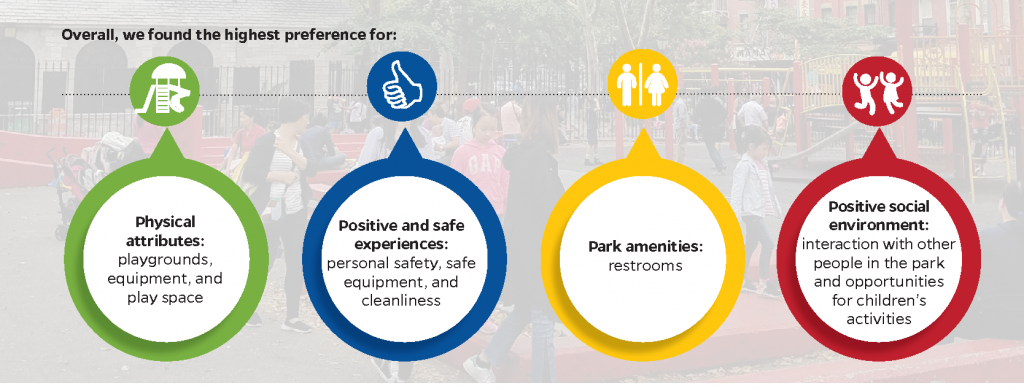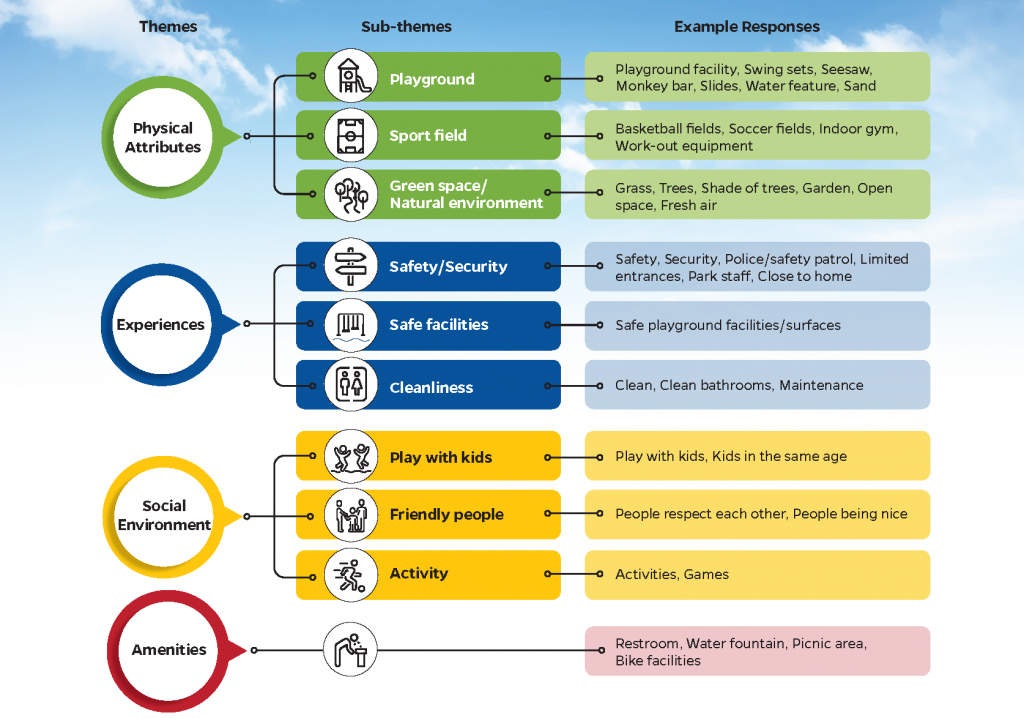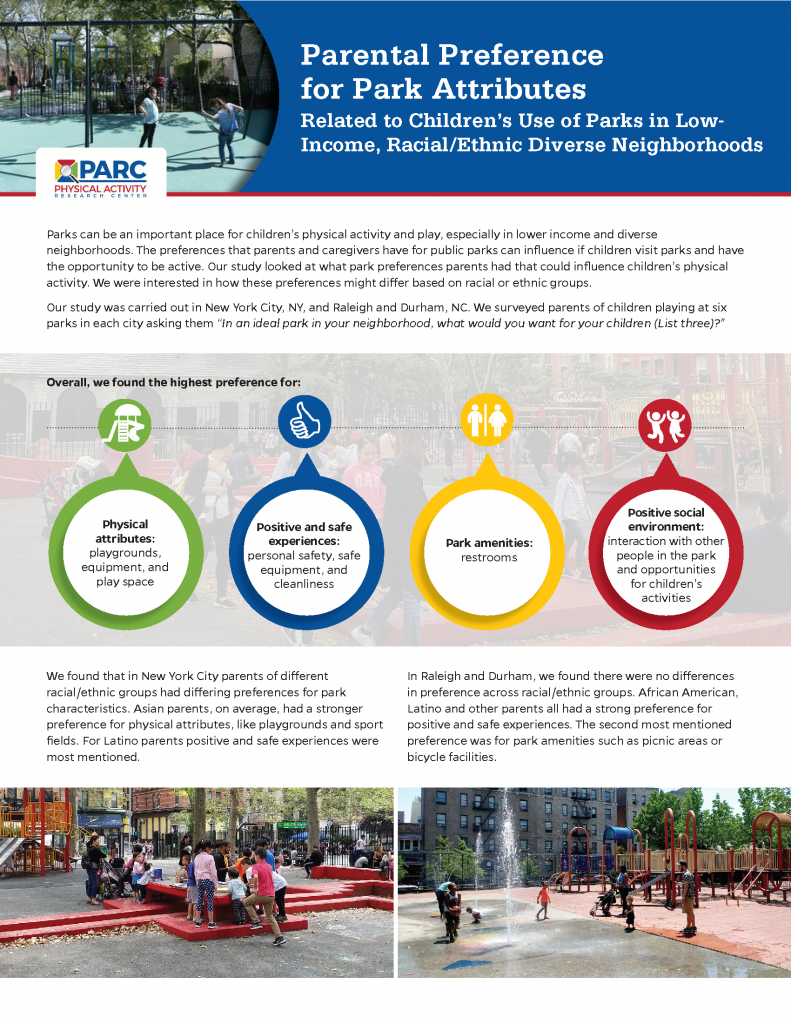Parental preference for part attributes related to children’s use of parks in low-income, racial/ethnic diverse neighborhoods
By: Scott Ogletree, Jing Huei Huang, Claudia Alberico, Myron F. Floyd, and J Aaron Hipp, North Carolina State University; Oriol Marquet, Universitat Autònoma de Barcelona
Parks can be an important place for children’s physical activity and play, especially in lower-income and diverse neighborhoods. The preferences that parents and caregivers have for public parks can influence if children visit parks and have the opportunity to be active. Our study looked at what park preferences parents had that could influence children’s physical activity. We were interested in how these preferences might differ based on racial or ethnic groups.
Our study was carried out in New York City, NY, and Raleigh and Durham, NC. We surveyed parents of children playing at six parks in each city asking them “In an ideal park in your neighborhood, what would you want for your children (List three)?”
Results

We found that in New York City parents of different racial/ethnic groups had differing preferences for park characteristics. Asian parents, on average, had a stronger preference for physical attributes, like playgrounds and sport fields. For Latino parents, positive and safe experiences were most mentioned.
In Raleigh and Durham, we found there were no differences in preference across racial/ethnic groups. African American, Latino and other parents all had a strong preference for positive and safe experiences. The second most mentioned preference was for park amenities such as picnic areas or bicycle facilities.
Implications

These findings help highlight aspects of parks that can be improved to meet the needs and desires of all families as well as Black, Latino, and Asian parents and caregivers. Making parks attractive can have the beneficial outcome of greater use by children and adults. Although there is no one-size-fits-all approach to encourage park use, our findings suggest facilities and park safety are ways local government agencies could design and maintain parks that would be preferred by parents for their children. In Raleigh, Durham, and New York Latino neighborhoods, where park safety was an important concern, there is a need to increase the sense of security in and around parks, such as ensuring adequate lighting, reducing litter and graffiti, and providing opportunities for the community to gather and build trust. Future research should seek to understand how parents’ preferences can best be communicated and acted upon by park systems and communities. Related, how do parents’ decisions influence children’s outdoor play and physical activity and examining whether parents’ preferences for park attributes are associated with children’s park-based activity. We also see the need to explore the social, cultural, and environmental factors underlying these differences and their role in park use decisions.
Findings from this lay summary are available in the full article, published in Journal of Healthy Eating and Active Living:
Ogletree S, Huang J-H, Alberico C, Marquet O, Floyd MF, Hipp JA. Parental preference for park attributes related to children’s use of parks in low-income, racial/ethnic diverse neighborhoods. Journal of Healthy Eating and Active Living. 2020.
Suggested Citation for Lay Summary:
Ogletree S, Huang J-H, Alberico C, Marquet O, Floyd MF, Hipp JA. Parental preference for park attributes related to children’s use of parks in low-income, racial/ethnic diverse neighborhoods. A Lay Summary. Physical Activity Research Center and Raleigh, NC: North Carolina State University; 2020.
This lay summary was made possible with funding from the Physical Activity Research Center. The research that generated the lay summary was led by Drs. Myron F. Floyd and J. Aaron Hipp from North Carolina State University.

